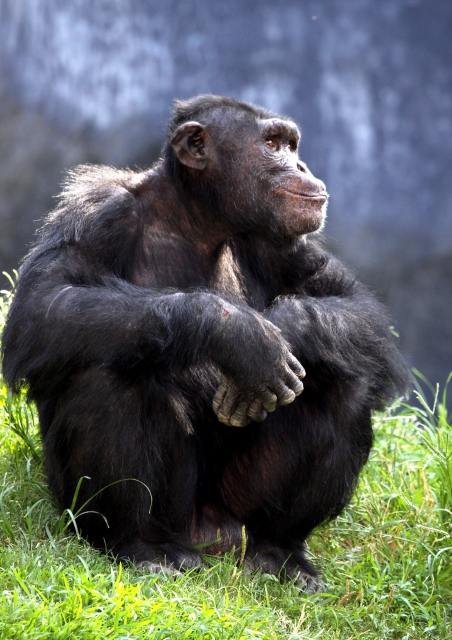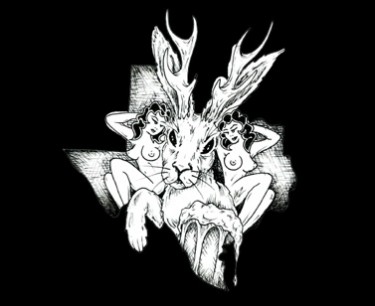Cryptozoology
The Skeptic’s Dictionary
I'm certain every reader of this blog could happily spend hours at The Skeptic's Dictionary, whose mission since 1994 has been to explore "Strange Beliefs, Amusing Deceptions, and Dangerous Delusions."
For instance, why not learn more about the bunyip?
Posted By: Paul - Tue Jan 25, 2011 -
Comments (4)
Category: Authorities and Experts, Cryptozoology, Fictional Monsters, Weird Studies and Guides, Weird Theory
Latitude Zero
Posted By: Paul - Tue Jun 29, 2010 -
Comments (2)
Category: Animals, Cryptozoology, Geography and Maps, Movies, Oceans and Maritime Pursuits, Paranormal, Surgery, Science Fiction, 1960s, Asia, Weapons
Weird Animals - Och Aye The Roo!

Of course, this won’t be news to one member of Britain’s thriving rod-fishing community, who this week caught a piranha in his local pond (Guardian).
Another place you might not expect to see exotic creatures is on your lunch menu, but that didn’t stop one restaurant owner in Mesa, AZ from putting “lion burgers” on the menu to celebrate soccer’s World Cup. Cameron Selogie of the Il Vinaio makes his “mane course” with genuine lion meat imported from South Africa, earning him the ire of local animal rights groups and several death threats, but not a reprimand from health officials. According to an FDA spokesman serving lion meat is perfectly legal, as long as it’s not roar (Scotsman).
Slightly luckier than the lions, one cat who has fallen on his feet is Oscar, a housecat from the Isle of Jersey in the UK, widely billed as the “bionic cat” after successfully receiving two artificial hind legs to replace the ones he lost in an altercation with a combine harvester (BBC News).
You might think pitting a rodent like mammal against a 12 tonne Triceratops makes for an equally one-sided match up, but evidence emerged recently that our primitive ancestors occasionally feasted upon dinosaurs. Seventy-five million year old “gnaw marks” of a kind characteristic of early mammals, and belonging to a creature not much bigger than a squirrel, have been found on the fossil bones both of Tricerotops and the crocodile-like predator Champsosaurus (LiveScience).
Sadly today the nearest we get to dinosaur flesh is turkey or chicken, but not all birds were prized solely for their meat. The huia bird of New Zealand for example, was once used to make the feathered head-dresses of Maori chiefs, until predation from accidentally introduced species drove it to extinction around 1907. But if the bird has gone its feathers have not, and one recently became the most expensive feather ever when it sold at auction for NZ$8000, i.e. $4000 American (Telegraph).
More in extended >>
Posted By: Dumbfounded - Mon Jun 28, 2010 -
Comments (4)
Category: Aliens, Animals, Dinosaurs and Other Extinct Creatures, Cryptozoology, Food, Overpriced Merchandise, Pets, Cats, Rants, Warnings, Jeremiads, Prophecies and Cassandra-like Figures, Science, Violence, 1980s
Cornify
Is the news getting you down? Then why not visit the Cornify page, where you can brighten up any gloomy photo? See how I've made the BP Oil Spill contamination look more cheerful?
Posted By: Paul - Wed May 26, 2010 -
Comments (4)
Category: Cryptozoology, Kitsch and Collectibles, Internet
The Jackalope

Posted By: Paul - Wed Nov 25, 2009 -
Comments (3)
Category: Cryptozoology, Fictional Monsters, Recreation, Regionalism, Alcohol, Eating
A Little Light Weirdness - 5

Or perhaps this is simply proof that Scottish universities have got the jump on their transatlantic counterparts? In a move nearly, but not quite, totally unlike Jurassic Park, Professor Hans Larsson of McGill University in Montreal has announced that he hopes to de-evolve chickens back into their dinosaur ancestors. Larsson stressed that he is not aiming to recreate whole dinosaurs at this time, but by switching on or off certain genes in chick embryos he hopes to induce atavistic dinosaur anatomy in the full grown animals (AFP).
More in extended >>
Posted By: Dumbfounded - Wed Aug 26, 2009 -
Comments (12)
Category: Animals, Ceremonies, Weddings, Contests, Races and Other Competitions, Cryptozoology, Fictional Monsters, Fairs, Amusement Parks, and Resorts, Geography and Maps, Inebriation and Intoxicants, Nature, Science, Experiments, Surrealism
The Shaggs
Here's an oldie-but-goodie from the catalog of weird music: MY PAL FOOT-FOOT, by the Shaggs.
Posted By: Paul - Sun Jul 05, 2009 -
Comments (4)
Category: Cryptozoology, Fictional Monsters, Family, Music, 1960s
Bigfoot Prefers Garlic Cloves, Not Powdered
I could expect this on certain channels, or in tabloids. But not The National Geographic Channel! The interesting part starts at about 0:43 and goes to 6:00.
Posted By: qualityleashdog - Fri May 15, 2009 -
Comments (4)
Category: Cryptozoology, Hoaxes and Imposters and Imitators, Anthropology
Florida Skunk Ape
Who knew that Chuck's state boasted its own Bigfoot, in the form of the Florida Skunk Ape?
Posted By: Paul - Thu Apr 16, 2009 -
Comments (5)
Category: Cryptozoology, Regionalism
Porky in Wackyland
As you're eating your Easter Ham, what better cartoon icon to think of than Porky Pig!
Posted By: Paul - Sun Apr 12, 2009 -
Comments (2)
Category: Cryptozoology, Pop Art, Surrealism, Cartoons

| Who We Are |
|---|
| Alex Boese Alex is the creator and curator of the Museum of Hoaxes. He's also the author of various weird, non-fiction, science-themed books such as Elephants on Acid and Psychedelic Apes. Paul Di Filippo Paul has been paid to put weird ideas into fictional form for over thirty years, in his career as a noted science fiction writer. He has recently begun blogging on many curious topics with three fellow writers at The Inferior 4+1. Contact Us |





